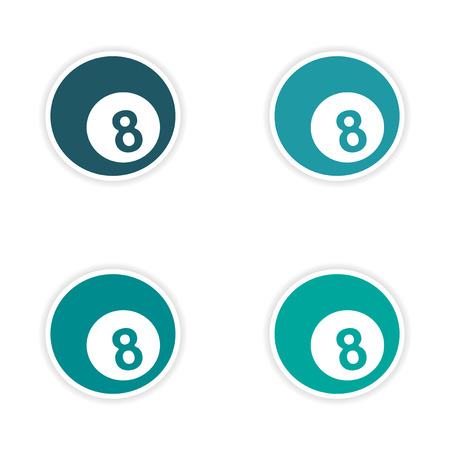1. Introduction to Bazi: What Is the Four Pillars of Destiny?
Bazi, often called the Four Pillars of Destiny, is an ancient Chinese system for understanding your personality, life path, and potential opportunities or challenges. Recently, more Americans have started exploring Bazi as a way to gain insight into their personal strengths, relationships, and even career choices. But what exactly is Bazi, and why is it becoming popular in the U.S.?
Origins of Bazi
Bazi has its roots in Chinese metaphysics and dates back over a thousand years. The term “Bazi” literally means “Eight Characters” in Mandarin, referring to the eight symbols derived from a persons birth year, month, day, and hour. These symbols are used to create a unique chart that acts like a cosmic map for your destiny.
Why Is It Called the Four Pillars?
The “Four Pillars” come from four key pieces of birth information:
| Pillar | Represents | Example |
|---|---|---|
| Year Pillar | Family background & ancestry | 1988 (Dragon Year) |
| Month Pillar | Childhood & parents | May (Snake Month) |
| Day Pillar | Yourself & marriage | 15th (Tiger Day) |
| Hour Pillar | Children & later life | 3:00 PM (Rooster Hour) |
Cultural Significance of Bazi
Bazi has been an important part of Chinese culture for centuries. Traditionally, families would consult Bazi experts before major events like marriages, business deals, or moving into a new home. Even today in China and among Asian American communities, Bazi readings are used to make big decisions and plan for the future.
Bazi’s Growing Popularity in America
In recent years, Bazi has attracted attention in the United States as people search for alternative ways to understand themselves beyond Western astrology or personality tests. With its focus on both nature (your inherent traits) and nurture (how you interact with your environment), Bazi offers a holistic perspective that resonates with modern Americans looking for personal growth tools.
The Basic Principles of Bazi Charts
A typical Bazi chart combines elements from two main categories: Heavenly Stems and Earthly Branches. These represent different energies or “Qi” present at your birth moment. Each pillar (year, month, day, hour) consists of one stem and one branch—making up the eight characters that define your chart.
| Bazi Element | Description | No. of Types |
|---|---|---|
| Heavenly Stems | Main energy influences (like Wood, Fire) | 10 types |
| Earthly Branches | Zodiac animals linked with hidden elements (like Rat, Ox) | 12 types |
Why Learn Bazi?
Many people find value in understanding their Bazi chart because it can help highlight natural talents, potential career paths, compatible relationships, and areas where they might face challenges. As more Americans embrace multicultural approaches to self-discovery and wellness, learning about Bazi provides a fresh way to reflect on personal growth and decision-making.
2. Breaking Down the Bazi Chart: Components and Structure
Bazi, or Four Pillars of Destiny, is a fascinating system rooted in Chinese metaphysics. If you’re just getting started, it can look a little overwhelming at first—but once you know the main parts, it all starts to make sense. Let’s break down what makes up a Bazi chart and how these components interact to tell your unique story.
Main Elements of a Bazi Chart
Every Bazi chart is made up of four “pillars”—Year, Month, Day, and Hour. Each pillar contains two parts: a Heavenly Stem and an Earthly Branch. That means there are eight characters in total (that’s where the name “Bazi,” or “Eight Characters,” comes from!).
| Pillar | Heavenly Stem | Earthly Branch |
|---|---|---|
| Year | Top character | Bottom character |
| Month | Top character | Bottom character |
| Day | Top character | Bottom character |
| Hour | Top character | Bottom character |
Heavenly Stems: The Surface Element
The Heavenly Stems are like the main energy on top of each pillar. There are 10 Heavenly Stems, and each one represents either Yin or Yang of the five elements: Wood, Fire, Earth, Metal, and Water. For example, Jia (Yang Wood) or Ding (Yin Fire). These Stems show what kind of outward energy is present during that specific year, month, day, or hour.
Earthly Branches: Hidden Layers Below
Beneath each Stem sits an Earthly Branch—there are 12 Branches in total, corresponding to the Chinese zodiac animals (Rat, Ox, Tiger, etc.). But they’re more than just animals! Each Branch hides one or more elements within it. This means Earthly Branches add depth and extra meaning to your Bazi chart—they’re like secret ingredients that influence the overall flavor.
Quick Guide to Earthly Branches and Their Hidden Elements:
| Branch (Zodiac) | Main Element(s) | Zodiac Animal Symbol |
|---|---|---|
| Zǐ (Rat) | Water (Yang) | 🐭 Rat |
| Chǒu (Ox) | Earth (Yin), plus Water/Metal inside | 🐮 Ox |
| Yín (Tiger) | Wood (Yang), plus Fire/Earth inside | 🐯 Tiger |
| Mǎo (Rabbit) | Wood (Yin) | 🐰 Rabbit |
| Chén (Dragon) | Earth (Yang), plus Wood/Water inside | 🐲 Dragon |
| Sì (Snake) | Fire (Yin), plus Metal/Earth inside | 🐍 Snake |
| Wǔ (Horse) | Fire (Yang), plus Earth inside | 🐴 Horse |
| Wèi (Goat) | Earth (Yin), plus Wood/Fire inside | 🐐 Goat |
| Shēn (Monkey) | Metal (Yang), plus Water/Earth inside | 🐵 Monkey |
| You (Rooster) | Metal (Yin) | 🐔 Rooster |
| Xū (Dog) | Earth (Yang), plus Metal/Fire inside | 🐶 Dog |
| Hài (Pig) | Water (Yin), plus Wood inside | 🐷 Pig |
The Relationships: How It All Connects Together
The magic of Bazi comes from how these Stems and Branches interact with each other. They can support each other or sometimes clash—just like people do! For example:
- If your Day Stem is Yang Wood but your Month Branch holds Metal, Metal can “cut” Wood—so there might be some tension or challenges to work through in that area of life.
- If multiple Branches contain Water elements, you might have strong talents related to communication or creativity because Water is about flow and flexibility.
- Certain combinations create harmony—like Wood feeding Fire—meaning opportunities for growth in relationships or career.
Your Personal Blueprint
The layout of these Stems and Branches in your chart acts as a personal blueprint. In American culture terms, think of it like your astrological birth chart—a map showing both your strengths and areas where you might want to pay extra attention. Learning to read these signs is the first step toward understanding yourself better through the lens of Bazi!

3. The Role of Yin and Yang and the Five Elements
Bazi, or Four Pillars of Destiny, is deeply rooted in the ancient Chinese philosophies of Yin and Yang and the Five Elements. Understanding these two concepts is essential for anyone who wants to start interpreting Bazi charts. Let’s break down what they mean and how they shape your personality and life journey.
What Are Yin and Yang?
Yin and Yang represent two opposite but complementary energies found in everything around us. In Bazi, these energies help explain the balance or imbalance in your chart, which can affect your strengths, weaknesses, relationships, and even your career path.
| Yin | Yang |
|---|---|
| Passive, soft, receptive | Active, strong, assertive |
| Associated with night, moon, cold | Associated with day, sun, heat |
| Represents subtle power | Represents visible power |
Everyone has both Yin and Yang influences in their Bazi chart. Too much of one over the other can show up as challenges or imbalances in daily life.
The Five Elements: Nature’s Building Blocks
The Five Elements—Wood, Fire, Earth, Metal, and Water—are at the core of Bazi analysis. Each element has unique traits that shape who you are and how you interact with the world.
| Element | Main Traits | Personality Example |
|---|---|---|
| Wood | Growth-oriented, flexible, creative | A natural leader who values progress and learning new things. |
| Fire | Passionate, energetic, enthusiastic | An outgoing person who brings excitement to any group. |
| Earth | Stable, reliable, nurturing | A trustworthy friend who offers support during tough times. |
| Metal | Disciplined, determined, precise | A go-getter who sets clear goals and achieves them. |
| Water | Adaptable, wise, communicative | A good listener who adapts easily to new situations. |
How Yin-Yang and the Five Elements Influence Your Life Path
Your Bazi chart is made up of a combination of Yin-Yang energies and the Five Elements based on your birth date and time. These elements interact in cycles—supporting or challenging each other—which can affect everything from your career choices to your relationships. For example:
- If you have more Wood in your chart, you might thrive in creative fields like design or education.
- If you’re strong in Metal energy but lack Fire, you may be highly disciplined but sometimes struggle with motivation or inspiration.
The key is finding balance between these forces so you can make the most out of your natural strengths while working on areas that need improvement.
A Simple Example: Finding Balance in Your Chart
If someone has an abundance of Yang Fire but very little Water (which naturally cools Fire), they may come across as passionate but sometimes impulsive or impatient. Recognizing this pattern can help them focus on developing patience and flexibility as part of personal growth.
By understanding how Yin-Yang energy and the Five Elements work together in your Bazi chart, you gain valuable insights into why you think, feel, and act the way you do—and how to use that knowledge to create a happier and more balanced life.
4. Finding and Analyzing Your Bazi Chart
How to Access Your Bazi Chart
Getting started with Bazi (also known as Four Pillars of Destiny) is easier than ever, thanks to online tools made for English speakers in the U.S. All you need is your exact birth date and time, plus your place of birth. This info helps generate an accurate chart based on Chinese solar calendar calculations.
Step-by-Step: Getting Your Bazi Chart Online
- Gather your info: Write down your birth year, month, day, hour, and city/state/country.
- Choose a reputable online tool: Here are some trusted resources:
| Website | Main Features |
|---|---|
| YourChineseAstrology.com | User-friendly, free chart generator, basic explanations |
| Bazi-Calculator.com | Simple interface, instant results, offers chart breakdowns |
| FourPillars.net | Bilingual option, detailed charts for further study |
- Input your details: Enter all your birth info carefully. Double-check AM/PM for accuracy.
- Generate your chart: Click “Calculate” or “Submit” to see your Bazi chart appear.
Understanding Basic Bazi Patterns
Your Bazi chart will show four columns (Year, Month, Day, Hour)—each with a Heavenly Stem and Earthly Branch. For beginners in the U.S., focus on these basics first:
| Pillar | Main Meaning in Life | Common Reference |
|---|---|---|
| Year Pillar | Ancestry, early environment, outer image | Family roots & background influences |
| Month Pillar | Parents, career potential, early adulthood traits | Your “work personality” & upbringing style |
| Day Pillar (Day Master) | Yourself—core personality & marriage outlook | The “real you” and relationship vibes |
| Hour Pillar | Your dreams, kids, late-life prospects & ambitions | Your future goals and legacy plans |
Tips for U.S. Readers New to Bazi Interpretation:
- No prior astrology experience needed: Just start by learning about your Day Master (the Heavenly Stem of your Day Pillar).
- Cultural note: Some terms may feel unfamiliar; don’t worry! Many sites have glossaries or beginner guides.
- Avoid paid readings at first: Use free tools until you’re comfortable with the basics.
- Treat it as self-reflection: Think of Bazi as another way to get insights into your habits and strengths—kind of like a Myers-Briggs or Enneagram test but with a deeper cultural history.
- If stuck—join a forum! Try Reddit’s r/ChineseAstrology or Facebook groups where Americans share tips and ask questions in plain English.
5. Practical Applications: Using Bazi Insights in Everyday Life
Bazi, also known as the Four Pillars of Destiny, is an ancient Chinese system that can help you understand yourself and your relationships better. While it may sound mystical, many Americans are discovering how practical and relevant Bazi can be for everyday life. Here’s how beginners can use Bazi knowledge to enhance self-awareness, improve relationships, and support personal growth.
Self-Awareness: Discovering Your Strengths and Weaknesses
Bazi charts reveal the balance of five elements—Wood, Fire, Earth, Metal, and Water—in your birth data. By understanding which elements dominate or are lacking in your chart, you can gain insights into your personality traits and natural tendencies. For example:
| Element | Common Traits | Everyday Example |
|---|---|---|
| Wood | Growth-oriented, compassionate | You might enjoy volunteering or mentoring others. |
| Fire | Energetic, charismatic | You may thrive in leadership roles at work or in community groups. |
| Earth | Reliable, practical | You’re the friend everyone relies on during tough times. |
| Metal | Organized, disciplined | You excel at planning events or managing finances. |
| Water | Adaptable, intuitive | You easily connect with people from all walks of life. |
If you notice an imbalance—like too much Fire (impulsiveness) or too little Earth (lack of stability)—you can work on strategies to find better harmony in your daily routine.
Relationships: Understanding Compatibility and Communication Styles
Bazi isn’t just about self-discovery; it’s also a helpful tool for understanding friends, family, and romantic partners. Each person’s chart offers clues about their core motivations and communication preferences. This can be especially useful when navigating cultural differences or workplace dynamics common in the U.S.
Relatable Scenario: Navigating a Roommate Conflict
Imagine you have a roommate who is strong in Metal (organized) while you are more Water (flexible). You might clash over house rules—your roommate prefers strict schedules while you go with the flow. Knowing this through Bazi can help both of you appreciate each other’s strengths and find middle ground. Maybe agree on flexible cleaning days but set fixed deadlines for bills.
Personal Growth: Setting Meaningful Goals Based on Your Bazi Chart
Bazi can guide you toward goals that feel authentic and achievable. If your chart shows a strong Wood element (growth-oriented), you might set goals around learning new skills or expanding your network. If Earth dominates (practicality), focus on financial security or building a stable home environment.
| Bazi Element Strength | Satisfying Goal Example (U.S. Context) |
|---|---|
| Strong Fire | Take the lead on a community project or run for PTA president at your child’s school. |
| Strong Earth | Create a budget plan for buying your first home. |
| Strong Water | Pursue a side hustle that lets you meet new people each week. |
The key is using Bazi as a map—not a rulebook—to better understand yourself and make choices that align with your true nature. As more Americans explore holistic wellness and Eastern philosophies, integrating Bazi insights into daily routines can offer unique guidance for living authentically and building stronger relationships.


